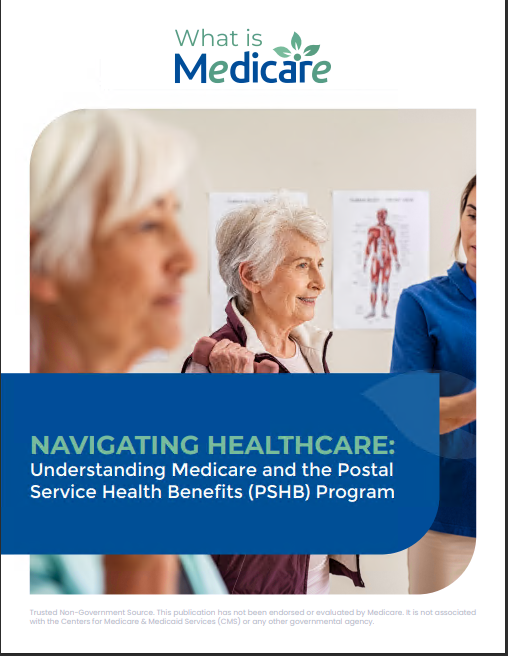Key Takeaways:
- Medicare Advantage plans offer benefits beyond Original Medicare but come with limitations you’ll need to weigh carefully.
- Your personal health needs, preferences, and lifestyle play a big role in determining whether a Medicare Advantage plan is right for you.
Understanding the Appeal of Medicare Advantage Plans
When exploring your Medicare options, Medicare Advantage plans often pop up as a popular choice. These plans combine the benefits of Medicare Part A and Part B while typically offering extras like dental, vision, or hearing coverage. But what makes these plans appealing to some and less enticing to others? Let’s break it down so you can decide if this option aligns with your needs.
The Basics: What Are Medicare Advantage Plans?
Medicare Advantage, also known as Medicare Part C, is an alternative to Original Medicare. Instead of receiving Part A (hospital insurance) and Part B (medical insurance) directly from the government, you enroll in a plan provided by a private insurer.
What These Plans Cover
Medicare Advantage plans are required to offer at least the same benefits as Original Medicare. Many plans, however, go beyond the basics by adding benefits like:
- Routine dental and vision care
- Prescription drug coverage
- Wellness programs and fitness memberships
These extras are a major draw, especially if you’re looking for more comprehensive coverage under one umbrella.
The Network Factor
Most Medicare Advantage plans work within a network of doctors and hospitals. This can include Health Maintenance Organizations (HMOs) or Preferred Provider Organizations (PPOs). If you’re comfortable staying within a network, this might not be a drawback. However, if you value flexibility, this limitation might feel restrictive.
Why Medicare Advantage Appeals to Some
Bundled Benefits
One of the standout features is how these plans consolidate coverage. Instead of juggling multiple policies—such as a separate Medicare Part D prescription drug plan—you get everything in one package.
Lower Out-of-Pocket Costs
Medicare Advantage plans often cap your out-of-pocket costs. For example, once you hit the annual maximum, the plan covers 100% of eligible expenses for the rest of the year. This appeals to those who want predictable healthcare costs.
Additional Perks
Who doesn’t love extras? From gym memberships to telehealth services, Medicare Advantage plans pack in benefits designed to enhance your overall wellness. If these align with your lifestyle, they can add significant value.
The Downsides That Give Others Pause
Limited Provider Networks
While the network model keeps costs manageable, it restricts your choice of doctors and hospitals. If your preferred provider isn’t in the plan’s network, you might need to switch or pay higher out-of-network costs.
Referral Requirements
Some plans, particularly HMOs, require you to get referrals for specialist care. This extra step can feel like a hassle, especially if you’re used to direct access to specialists.
The “Use It or Lose It” Factor
The extra benefits in Medicare Advantage plans might sound enticing, but they’re only valuable if you actually use them. If you’re not taking advantage of the wellness programs or dental coverage, you might not be maximizing your plan’s value.
Comparing Costs: Original Medicare vs. Medicare Advantage
When it comes to costs, Medicare Advantage plans might seem more affordable on the surface. But let’s dig deeper:
Monthly Premiums
Some Medicare Advantage plans have low monthly premiums compared to the combined costs of Original Medicare and a Medigap policy. However, lower premiums often come with higher out-of-pocket costs when you need care.
Deductibles and Copayments
While Original Medicare offers predictable costs for most services, Medicare Advantage plans can introduce copayments and coinsurance for various treatments, which can add up quickly.
Out-of-Pocket Maximums
One major advantage of Medicare Advantage is the out-of-pocket maximum. With Original Medicare, there’s no cap on how much you could pay in a year. Medicare Advantage plans limit this exposure, providing a financial safety net.
How Your Lifestyle Influences the Decision
Your personal health needs and lifestyle play a huge role in determining whether Medicare Advantage is a good fit. Consider these factors:
Frequent Travelers or Snowbirds
If you split your time between different states, the network restrictions of Medicare Advantage could be problematic. Original Medicare tends to offer more flexibility for out-of-state care.
Chronic Health Conditions
For those managing ongoing health conditions, access to specialists is critical. If your preferred specialists aren’t in a Medicare Advantage network, sticking with Original Medicare might make more sense.
Budget Constraints
If keeping monthly premiums low is a priority, Medicare Advantage plans might seem attractive. Just make sure to weigh those savings against potential out-of-pocket costs during the year.
Medicare Advantage Enrollment Timelines
When considering Medicare Advantage, timing matters. Here are key periods to keep in mind:
Initial Enrollment Period (IEP)
Your IEP begins three months before your 65th birthday and lasts for seven months. This is your first chance to join a Medicare Advantage plan.
Annual Enrollment Period (AEP)
Every year from October 15 to December 7, you can enroll in, drop, or switch Medicare Advantage plans. Changes made during this period take effect on January 1.
Medicare Advantage Open Enrollment Period
From January 1 to March 31, current enrollees can make a one-time change to a different Medicare Advantage plan or return to Original Medicare.
Special Enrollment Periods (SEPs)
Certain life events, like moving out of your plan’s service area or losing employer coverage, may qualify you for a SEP, allowing you to make changes outside of the standard enrollment periods.
Making the Choice: What Should You Do?
Choosing between Original Medicare and Medicare Advantage isn’t one-size-fits-all. Here are a few tips to help you decide:
Evaluate Your Priorities
Make a list of what’s most important to you—low premiums, access to specific doctors, or extra benefits. Use this list to guide your research.
Review Plan Details Carefully
Plan benefits, networks, and costs can vary significantly. Take the time to compare options in your area.
Consider Your Health History
If you have significant healthcare needs, you’ll want a plan that minimizes out-of-pocket costs while giving you access to quality care.
Finding Balance: Aligning Plans with Your Needs
At the end of the day, the “best” Medicare plan is the one that works for your specific needs. Medicare Advantage offers great benefits for the right person, but it’s not ideal for everyone. Whether you value comprehensive coverage, freedom of choice, or predictable costs, understanding the trade-offs will help you make an informed decision.
Weighing the Benefits of Your Medicare Options
Navigating Medicare can feel overwhelming, but the key is understanding how the different plans align with your health needs and lifestyle. Medicare Advantage plans bring a lot to the table, but they’re not a perfect fit for everyone. By weighing the pros and cons and evaluating your priorities, you can confidently choose the path that works best for you.









